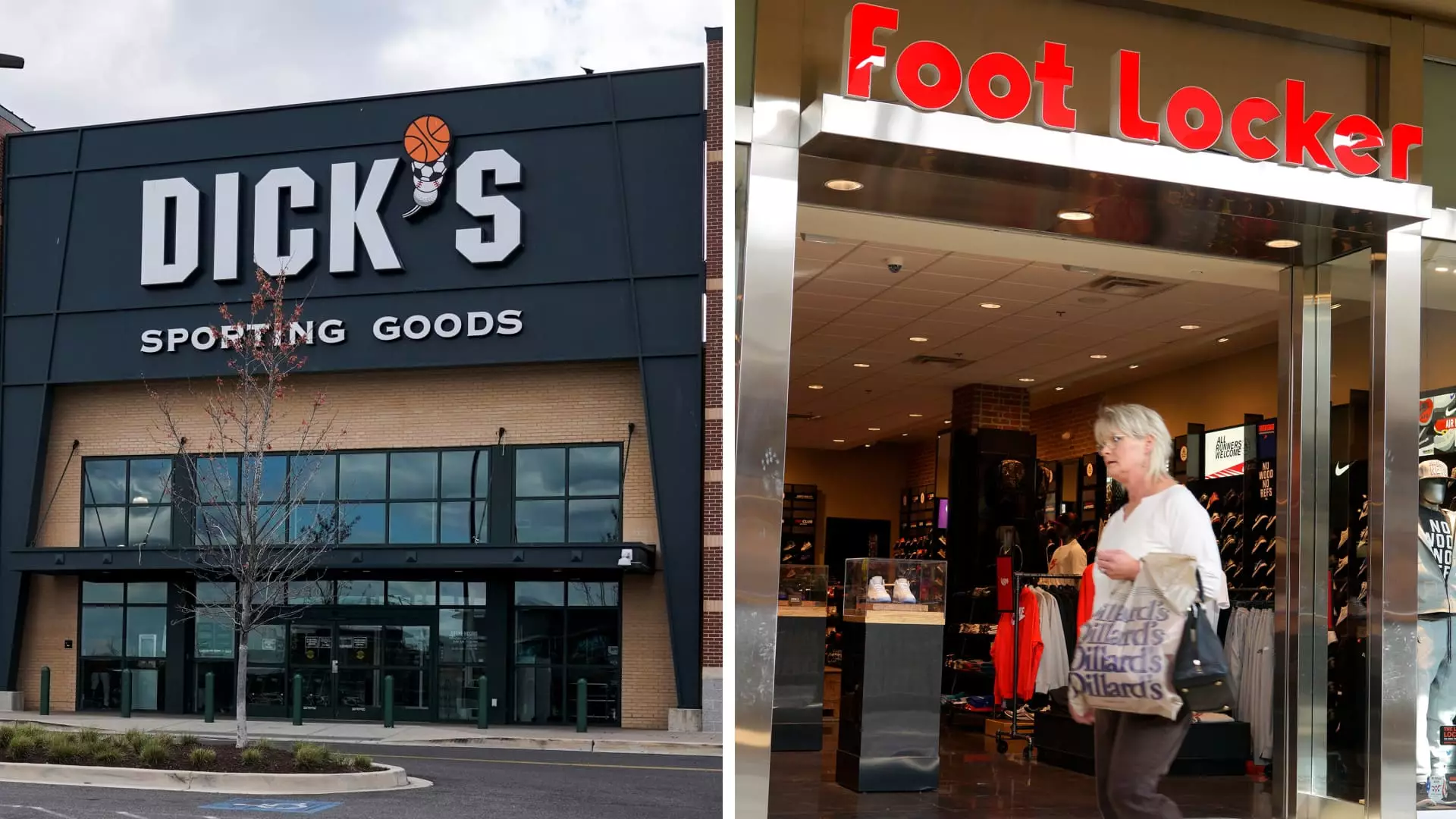At first glance, the proposed $2.4 billion merger between Dick’s Sporting Goods and Foot Locker might seem like a strategic move aimed at consolidating strengths and streamlining retail operations. However, a deeper analysis reveals a disturbing trend toward undue market concentration that threatens the very foundation of competitive enterprise. While proponents may tout efficiency and customer benefits, the underlying reality—especially for consumers and independent retailers—is far more troubling. Allowing such consolidation to proceed risks creating a duopoly that stifles innovation, inflates prices, and diminishes consumer choice—fundamental pillars of a vibrant free market.
The argument that combined market share remains below critical thresholds is, frankly, an oversimplification that ignores the broader implications of increased market power. When two major players dominate over 15% of a particular sector—particularly one as sensitive as athletic footwear—the competitive landscape is fundamentally altered. The possibility of collusive behavior or exerting bargaining power over suppliers becomes more plausible, thus undermining a core element of economic freedom. It is precisely this concentration of power that raises red flags about potential abuse, price setters rather than price takers, which is antithetical to a truly competitive environment.
Consumer Impact: The Cost of Corporate Domination
The political narrative, often influenced by corporate lobbying, tends to dismiss the genuine concerns of everyday consumers—particularly working-class families already burdened by inflation and economic instability. Elizabeth Warren’s recent call to scrutinize and potentially block the merger highlights a perspective grounded in protecting these vulnerable groups. The prospect of higher prices on athletic footwear and accessories isn’t merely a minor inconvenience; it’s a reflection of how market dominance can trickle down into everyday hardships.
As the cost of basic goods rises—from groceries to clothing—so does the risk that the consumer’s bargaining power diminishes. When a handful of corporations control so many retail outlets and wield significant supplier leverage, the natural competition that keeps prices low erodes. The threat posed by the merger is not just about market share, but about a future where rapid price inflation and reduced innovation could become normalized because independent retailers—formerly a vital part of the ecosystem—are marginalized or driven out altogether.
The societal implications extend beyond economics. When consumers face reduced choices, their ability to influence the market diminishes accordingly. This encapsulates a broader erosion of economic liberty—an outcome that center-right liberals with a concern for free enterprise should vehemently oppose. Market saturation by a handful of conglomerates undercuts the competitive spirit that fuels progress, variety, and fair pricing.
The Strategic Danger of Industry Consolidation and Political Bias
The broader geopolitical and economic context also cannot be ignored. The aggressive expansion of British retailer JD Sports into the U.S. market and its strategic acquisitions further intensify the threat of oligopoly. This trend signals a potential shift toward a U.S. retail landscape dominated by foreign giants, further undermining small and independent retailers who serve local communities.
From a political standpoint, the Biden administration’s pushback on major mergers and its emphasis on regulatory scrutiny reflect a recognition of these risks. Meanwhile, the Trump-era approach appeared more lenient, favoring larger corporations’ ability to merge with less interference. This inconsistency signals a critical need for center-right policymakers to adopt a balanced, pragmatic stance—one that recognizes the benefits of free enterprise but remains vigilant against monopolistic tendencies that ultimately harm consumers and the economy.
There is a responsibility for oversight agencies to carefully evaluate such mergers, not just on the basis of market share but also on their long-term implications for competition and consumer welfare. Simply allowing the consolidation of two leading athletic retailers, with minimal scrutiny, risks further entrenching corporate monopolies—an undesirable trajectory for a free-market economy that thrives on diversity and innovation.
The Future of Retail Competition: A Call for Caution and Balance
As the retail landscape evolves, the temptation for large corporations to swallow smaller competitors grows ever stronger. While efficiency and profitability are valid business pursuits, they should never come at the expense of a healthy competitive environment that benefits consumers and entrepreneurs alike. A merger that reduces the number of independent and regional players significantly hampers innovation, raises consumer prices, and consolidates economic power.
For center-right liberals committed to maintaining a dynamic, competitive marketplace, caution must be the guiding principle. Regulatory agencies should resist the siren call of quick approvals and instead obsessively scrutinize the long-term effects of such mergers. Protecting consumer choice and fostering a landscape where small businesses can compete fairly must remain the priority. A responsible approach recognizes that economic freedom is best preserved not through unchecked corporate expansion, but through vigilant oversight that guards fairness, innovation, and affordability for all.

